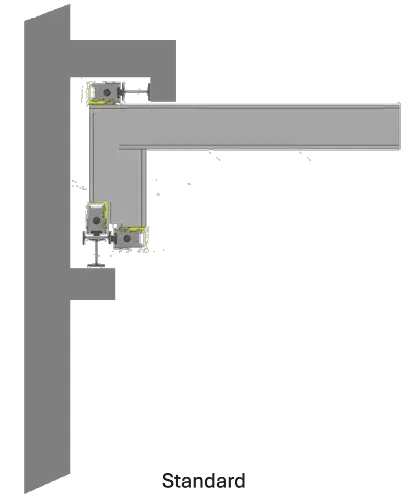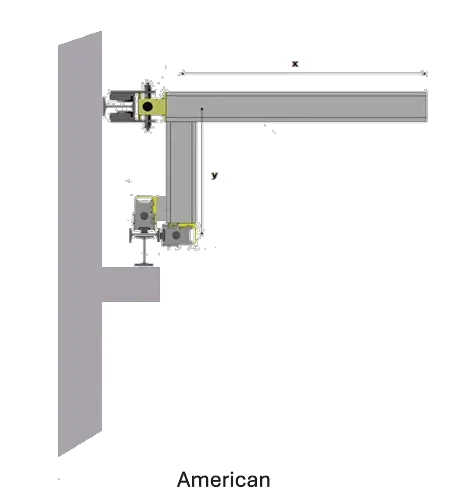Learning center
Information Center
Whether you're an expert or know nothing about cranes, you'll find everything you need to know HERE.

Wall-mounted overhead cranes are lifting devices attached directly to a wall in your building.
Do you need a lifting system for a restricted space?
Are you looking for an alternative to a standard overhead crane, but lacking floor space? Do you need to perform workstation lifts without using the main overhead crane?
At Premium Industrial Group, we know that choosing the right lifting system can be complex, especially if your layout constraints are specific.
A wall-mounted crane is a lifting device attached directly to a wall in your building. Unlike conventional overhead cranes, it does not require a self-supporting structure on the floor or ceiling rails.
It allows loads to be moved horizontally on an axis, usually along a single wall, while keeping the floor completely free.
In short, it's the ideal solution for optimizing space without compromising lifting capacity.
Technical specifications
Lifting capacity: up to ~ 10 metric tons
Span: up to ~ 12 meters
Lifting height: up to ~ 20 meters
Hoist type: chain or wire rope
Track: wall-mounted H- or I-beams (3 fixing points required)
Possible configurations :


What are the advantages of a wall-mounted crane?
What are the disadvantages of a wall-mounted crane?
Good to know: Loads transferred to walls are significant. A technical analysis by an engineer is required before installation. If your building was not designed to accommodate this type of equipment, a conventional overhead crane may be more suitable.


Information Center
Whether you're an expert or know nothing about cranes, you'll find everything you need to know HERE.